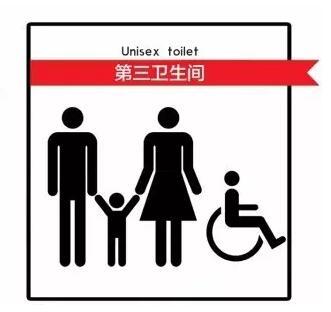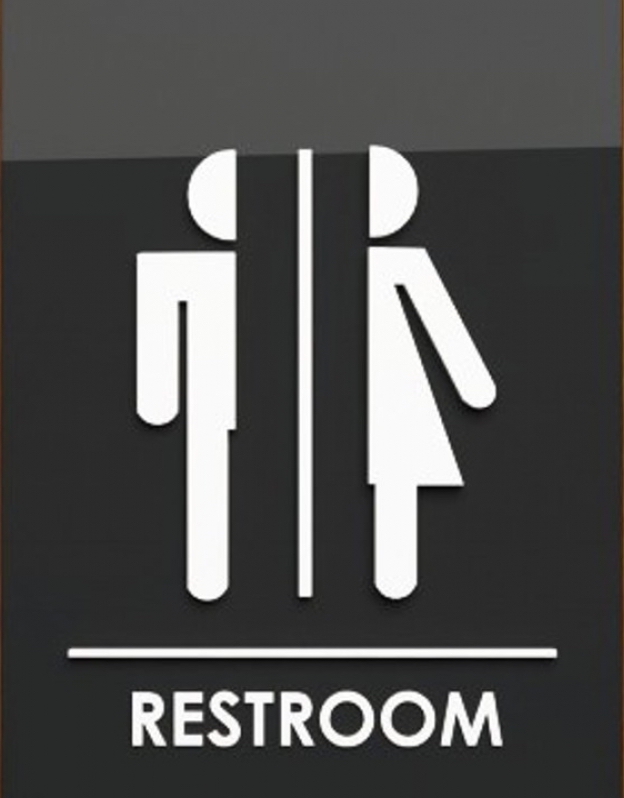A quantum leap in the Chinese toilet revolution
« previous post | next post »
A friend was visiting in Lijiang, Yunnan Province (southwestern China) earlier this week. She stayed in Yuhu 玉湖 village where Joseph Rock (1884-1962; the famous Austrian-American explorer, geographer, linguist, and botanist) lived nearly a century ago at the foot of Yulong 玉龙 Mountain. The area around Lijiang has become a famous tourist destination, not only for the beauty of its natural scenery, but for the richness of its local culture (more about that below). While in Lijiang, my friend was surprised to come upon signs for unisex toilets:
Here is some signage for such toilets in China:

The Chinese says:
dì sān wèishēngjiān 第三卫生间
("third bathroom; toilet; lavatory; lav; washroom; restroom; loo")
This one speaks for itself:
Here are two English articles on the subject:
- "Shanghai’s second unisex toilet achieves vital goal – cutting queuing time for women: While some residents are unfamiliar with gender-neutral bathrooms, young people have been more quick to accept the idea", Sarah Zheng, SCMP (5/29/17)
- "Unisex Toilets in China: the Debate", China Development Brief (11/24/16)
Addendum on Naxi / Nakhi
The reason why Joseph Rock went to Lijiang was to study the Nakhi script. Nakhi language is spoken by the Nakhi people who live in the foothills of the Himalayas in the northwestern part of Yunnan Province, as well as the southwestern part of Sichuan Province. The linguistic classification of Nakhi is contested, with proposals for various types of relationships with Lolo, Burmese, Tibetan, and so forth.
Nakhi has gained great fame for being written in Dongba symbols:
The Dongba, Tomba or Tompa or Mo-so symbols are a system of pictographic glyphs used by the ²dto¹mba (Bon priests) of the Naxi people in southern China. In the Naxi language it is called ²ss ³dgyu 'wood records' or ²lv ³dgyu 'stone records'. "They were developed in approximately the seventh century." The glyphs may be used as rebuses for abstract words which do not have glyphs. Dongba is largely a mnemonic system, and cannot by itself represent the Naxi language; different authors may use the same glyphs with different meanings, and it may be supplemented with the geba syllabary for clarification.
Nakhi is also written in the Ggo¹baw (MSM transcription Geba) syllabary, which is used primarily for transcribing mantras, but also to write some texts and for phonetically annotating Dongba glyphs.
Readings
- "Toilet Revolution!!" (11/26/17) — see particularly the last comment for numerous articles on this subject in the Chinese press
- "Civilized urinating" (10/31/17)
- "Linguistic advice in the lavatory: speaking Mandarin is a great convenience for everyone" (9/11/07)
- "Just the Queen invites irrigation" (4/8/08)
- "Let's go to the toilet for dinner tonight" (8/8/08)
- "Quadrilingual Washlet Instructions" (8/22/09)
- "I'm lovin' it — next to the toilet" (12/12/09)
- "Japanese hi-tech toilet instructions" (1/19/17)
- "Chinese lesson for today" (8/29/10)
- "Next day's Chinese lesson" (8/31/10)
- "Urination is inhuman" (2/6/11)
- "Pwimming poot" (8/29/11)
- "Signs from Kashgar to Delhi" (10/11/13)
- "Greater and lesser conveniences" (6/25/14)
- "Please pee in the pool" (8/4/14)
- "Kein Durchgang" (5/16/15)
- "Six God toilet water itching" (11/25/15)
- "'Please enter your cock after urinating'" (4/9/16)
- "Toilet: A Love Story" (9/1/18)
- "Bovine / friggin' toilet" (9/6/18)
- "Toilet revolution!, part 2" (11/22/18)
- Arthur Meursault, Party Members (Camphor Press, 2016), ch. 4 (can be read through Amazon's "Look Inside" feature here) — be prepared for a scatological horror story

Alex T said,
May 6, 2019 @ 8:57 pm
I was just in Lijiang and also noted these toilets. There's a quite large unisex bathroom in the Western Mountain Park in Kunming too.
The majority of storefronts in downtown Lijiang include Dongba translations/transliterations of the Chinese characters, similar to how you see Uyghur and/or Mongol script on signs in other parts of China.
Philip Taylor said,
May 7, 2019 @ 4:54 am
I have to say, for me is anything but self-explanatory. A half-man and half-woman, divided by two thick parallel lines, and a caption that communicates nothing (I don't want to rest, I want to pee and/or poo). In-flight safety leaflets are cryptic enough, but that toilet sign leaves a very great deal to be desired, IMHO.
Philip Taylor said,
May 7, 2019 @ 4:57 am
The <img> element in my message above disappeared during publishing; the embedded image was intended to be http://languagelog.ldc.upenn.edu/~bgzimmer/unisex2.jpg.
Jeremy Daum said,
May 10, 2019 @ 4:30 am
I'm still puzzled by Unisex bathrooms being for more than one sex, shouldn't they be Multi-sex?